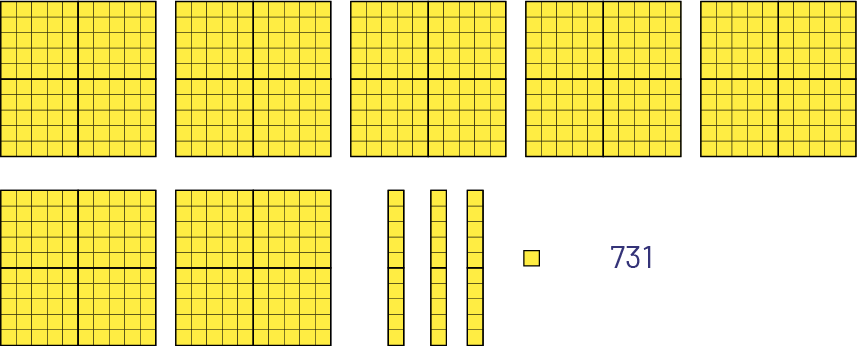B1.2 Compare and order whole numbers up to and including 1000, in various contexts.
Skill: Comparing and Ordering Whole Numbers
Comparing and ordering numbers makes connections between numbers clearer and increases understanding.
Students develop a better understanding of numbers when they are able to establish and use relationships between numbers.
For example, when they recognize and understand the order relationship in the number set, they are able to compare quantities in terms of more than, less than, or equal to. This understanding is a prerequisite for understanding the relationships "one more than" and "one less than".
The number line is a good tool to help students compare and order numbers (on a number line, the numbers increase as you move to the right and decrease as you move to the left).
Source: translated from Guide d’enseignement efficace des mathématiques de la 1re à la 3e année, Numération et sens du nombre, p. 61.
Skill: Comparing Numbers
Comparing two or more numbers involves determining which one is "greater than", "less than", or "equal to" another number or numbers.
It is also a question of identifying the characteristics of the numbers by observing what is similar or different between them. For example, for the numbers 712, 534 and 826, we notice:
- that all numbers are greater than 500;
- that they are all less than 900;
- that the three numbers are even;
- that the number in the hundreds, tens and ones places are different in the three numbers, etc.
The ability to compare numbers allows students to develop their number sense and this exploration gives them a foundation for ordering.
Order Relationships
The ability to recognize order relationships is acquired by comparing numbers, placing them in ascending and descending order, counting forwards and backwards and analyzing the relative proximity of two numbers.
Students should recognize the order relationship between the numbers by comparing them. They can describe the relationship by stating, for example, that 350 is less than 432.
Here are some examples of strategies they can use to compare numbers.
Comparison of the numbers 731 and 317
| Students can recognize that 731 is larger than 317: | Example |
|---|---|
|
To see that 700 is greater than 300 without having to take into account the tens and ones that make up the numbers. |
|
Deduce that 731 is greater than 317, since 731 is greater than 500 and 317 is less than 500. |
|
Visualize or represent the two numbers with base ten material to see that there are, for example, 7 hundreds in 731 and 3 hundreds in 317.   |
|
 The number 731 is located to the right of the number 317. |
|
7 3 1 The number 7 represents a quantity of 700 in 731. The number 3 represents a quantity of 300 in 317. 731 is therefore greater than 317. |
Source: adapted from Guide d’enseignement efficace des mathématiques de la 4e à la 6e année, Numération et sens du nombre, Fascicule 1, Nombres naturels, p. 45-46.
Numbers with the same units can be compared directly (e.g., 645 days compared to 625 days).
Sometimes numbers without the same unit can be compared, such as 625 weeks and 75 days. Knowing that the unit "weeks" is greater than the unit "days", and knowing that 625 is greater than 75, one can infer that 625 weeks is a greater length of time than 75 days.
Source: Ontario Curriculum, Mathematics Curriculum, Grades 1-8, 2020, Ontario Ministry of Education.
Skill: Ordering Numbers
Numbers can be placed in ascending order, from least to greatest, or descending order, from greatest to least.
Understanding place value enables any number to be compared and ordered.
Source: Curriculum de l’Ontario, Programme-cadre de mathématiques de la 1re à la 8e année, 2020, Ministère de l’Éducation de l’Ontario. .
The ordered numbers can be consecutive, for example 675, 676, 677, 678, 679, 680, or not, for example 39, 209, 399, 501, 998.
It is good to develop the skill of comparing numbers with students before the skill of ordering so that they can develop a better sense of how comparing the magnitude of numbers can help us to order them.
